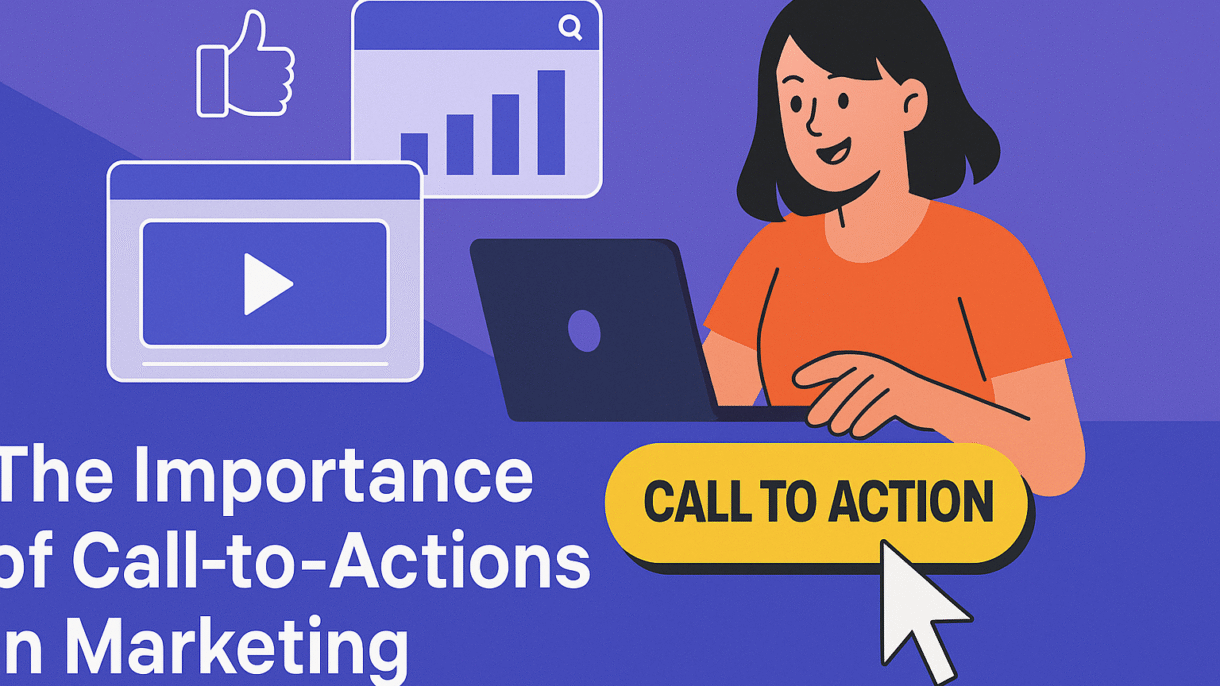No matter how beautiful your website or how valuable your content is, without a clear call-to-action (CTA), your visitors might leave without taking the next step. A CTA guides your audience on what to do next—whether it’s subscribing, contacting, booking, or buying.
In this post, you’ll learn why CTAs are critical in marketing and how to make them work harder for your business.
What Is a Call-to-Action?A call-to-action is any prompt that encourages the user to take a specific action. It can be a button, a link, a phrase, or even a form field. Examples:
“Book a free consultation”
“Subscribe to our newsletter”
“Download your free guide”
“Add to cart”
Effective CTAs guide your users smoothly through the customer journey.
Why CTAs Matter in MarketingThey turn visitors into leads: CTAs convert interest into action, leading to contact, bookings, or purchases.
They drive engagement: A good CTA keeps users interacting with your content.
They improve ROI: CTAs directly impact the effectiveness of your landing pages, emails, ads, and blogs.
They clarify next steps: Without a CTA, users are left wondering what to do next.
Where to Use CTAsCTAs should be placed strategically across your marketing platforms:
On your website: Hero section, product pages, footer, pop-ups
In your blog posts: Mid-article and at the end
In email campaigns: Subject line, body text, and signature
On social media: Bio links, story highlights, captions
On landing pages: Multiple scroll-triggered CTAs
Characteristics of a Strong CTAClear and Specific
Avoid vague text like “Click Here.”
Use action-oriented phrases like “Get My Free Audit” or “Schedule Your Call.”
Visually Distinct
Use buttons with contrasting colors.
Make sure it stands out from the surrounding content.
Value-Focused
Highlight the benefit to the user: “Start Saving Today,” “Learn in 7 Days.”
Urgency-Driven (When Appropriate)
Encourage faster action with phrases like “Limited Offer,” “Book Now,” or “Only 3 Spots Left.”
Mobile-Friendly
Ensure buttons are large enough and clickable on mobile screens.
Examples of CTAs That ConvertService-Based Business: “Book Your Free 15-Minute Consultation”
E-commerce Store: “Add to Cart” or “Get 10% Off Now”
Blog/Content Site: “Subscribe for Weekly Tips”
Course Creator: “Enroll Now – Spaces Limited”
Freelancer Portfolio: “Let’s Work Together”
Mistakes to AvoidUsing too many CTAs on one page (causes confusion)
Placing CTAs too far down the page (users might bounce before reaching them)
Not testing your CTAs (colors, wording, placement)
Using passive language (e.g., “Submit” instead of “Download Your Free Copy”)
How I Use CTAs to Grow My Clients’ ResultsAs a designer and marketer, I help clients create websites and campaigns with clear, compelling CTAs that guide their visitors toward real outcomes. Whether it’s generating leads, selling services, or building a mailing list, I ensure every page answers the question: “What do you want your visitor to do next?”
Let’s add purpose to your web presence. Reach out today and let’s boost your results with better CTAs.
Conclusion
CTAs are one of the simplest yet most powerful tools in your marketing toolkit. Done right, they don’t just improve conversions—they enhance user experience and make your brand feel more intentional.
Make every click count.
FAQsQ: How many CTAs should I have on a page?A: 1–2 strong CTAs per page is ideal. Avoid overwhelming users with too many choices.
Q: Should all my CTAs look the same?A: Keep branding consistent, but use variations in wording or position based on context.
Q: Can CTAs be used in blog posts?A: Absolutely! Mid-article CTAs are a great way to encourage sign-ups or downloads.

